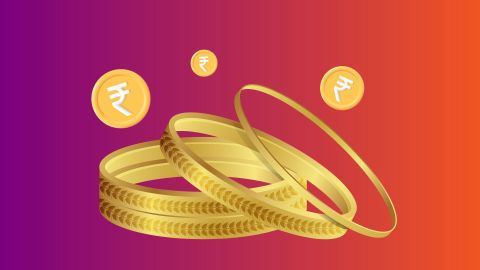Understanding 22 carat gold price in India
The 22 carat gold price in India is a topic of great interest for investors and jewellery enthusiasts alike. 22 carat gold, which is 91.67% pure, is commonly used in jewellery making. The price of this gold variant fluctuates daily due to various factors such as international gold rates, currency exchange rates, and domestic demand and supply. For instance, geopolitical tensions or economic downturns often lead to a surge in gold prices as investors turn to gold as a safe-haven asset. Additionally, the festive and wedding seasons in India see a spike in gold demand, subsequently driving up prices. Staying updated with the latest gold price in India helps buyers make informed decisions about their purchases or investments.
24 karat gold rate in India
The 24-karat gold rate in India reflects the highest level of purity, consisting of 99.9% pure gold with no alloy mixtures. This pure form of gold is often sought after by investors looking for gold bullion or coins due to its high value and liquidity. The price of 24-karat gold in India is influenced by international gold prices, currency fluctuations, and local market conditions. To ensure you are purchasing genuine 24-karat gold, it is important to understand 24 carat gold purity. Staying informed about the latest rates helps investors make well-informed decisions.
22 karat gold rate in India
The 22 karat gold rate in India is significant for those interested in buying jewellery, as this type of gold contains 91.6% pure gold mixed with other metals to enhance its durability. The price of 22-karat gold is affected by factors such as international gold prices, local demand, and economic conditions. Ensuring the quality of your gold purchase by understanding 22 carat gold purity is essential. Monitoring current rates and market trends can assist buyers and investors in making informed decisions about their gold investments.
18-karat gold rate in India
The 18-karat gold rate in India reflects the overall trend of gold prices in the region, which is influenced by global demand and supply, market trends, and local factors such as taxes and duties.
18 carat gold purity is 75% pure gold, with the remaining 25% consisting of other metals like silver, copper, and zinc. This higher purity level makes 18-karat gold more valuable and sought after for jewellery and investment purposes. The higher gold content also contributes to the higher price of 18-karat gold compared to lower karat gold.
Whether you are an investor or a consumer, it is crucial to stay updated on the gold rate in India to make the most of your investments.
Factors that affect the gold rate in India
Several factors contribute to the fluctuations in the gold rate in India:
-
Currency exchange rates
Changes in currency values, especially the Indian Rupee against the U.S. Dollar, can influence the 916 gold rate in India.
-
Government policies and regulations
Changes in taxation, import duties, or other government policies related to gold can impact its price in India.
-
Economic indicators
Economic factors such as inflation rates, interest rates, and overall economic stability can affect consumer purchasing power and, consequently, the demand for gold in India.
-
Global gold prices
The international gold market significantly impacts local rates. Fluctuations in global prices are often mirrored in India.
-
Why does the gold rate in India today differ from yesterday’s?
The gold rate in India today can differ from yesterday’s due to several influencing factors. Global market trends play a significant role, as gold is traded on international markets and its price is affected by worldwide economic conditions. Changes in the US dollar value, international demand and supply, and geopolitical events can impact gold prices everywhere, including India.
Currency exchange rates also affect gold prices. Gold is typically traded in US dollars, and any fluctuation in the exchange rate between the US dollar and the Indian rupee can cause variations in the local gold rate. A stronger rupee against the dollar might reduce gold prices, while a weaker rupee can increase them.
Local demand and supply dynamics are crucial as well. The demand for gold in India can vary due to local festivals, weddings, and other significant events. High demand can drive prices up, while low demand can bring them down. Additionally, the local supply of gold, including the availability of gold in local markets and jewellers, plays a crucial role.
Government policies and taxes can directly affect gold prices. Import duties and taxes on gold, as well as any changes in these regulations, can lead to immediate adjustments in gold rates. Inflation rates also influence gold prices, as gold is often considered a hedge against inflation. When inflation rates are high, people tend to invest more in gold to protect their wealth, which can drive up gold prices.
Market speculation by investors and traders can lead to short-term price fluctuations. Speculation is based on various factors, including economic forecasts, market trends, and future demand and supply expectations.
All these elements combined result in the gold rate in India today being different from yesterdays. Understanding these factors helps consumers and investors make informed decisions about buying and selling gold.
Lastly, socio-economic factors and inflation rates can affect purchasing power and thus the demand for gold, further influencing its price. All these elements combined provide the final price of 22-carat gold in India.
Techniques to check the purity of gold in India
Ensuring the purity of 22 carat gold is vital for both buyers and sellers. There are several methods to conduct a gold purity check:
- Hallmark certification: The Bureau of Indian Standards (BIS) provides hallmark certification to verify the purity of gold. The hallmark symbol on gold jewellery indicates that the gold meets the specified purity standards. Look for the BIS mark along with the '22k gold purity percentage.'
- Acid test: This traditional method involves applying a small drop of nitric acid to a tiny sample of gold. The reaction of the metal with the acid can indicate its purity. However, this method should be performed by professionals to avoid damage to the gold.
- Electronic gold testers: These devices use electrical conductivity to determine the purity of gold. They are user-friendly and provide accurate results without harming the jewellery.
- X-ray fluorescence (XRF) spectrometer: This advanced technique uses X-rays to determine the composition of the metal. It's highly accurate and commonly used by professional jewellers.
What determines the price of 22 carat gold in India?
The price of 22 carat gold in India is influenced by several factors. Firstly, international market trends play a crucial role. Gold is a globally traded commodity, and its price is impacted by international demand and supply dynamics. For instance, geopolitical tensions, economic instability, and changes in the US dollar value can significantly affect gold prices.
Secondly, the domestic factors within India also contribute. These include import duties, as India imports a large portion of its gold. Changes in government policies related to import duties can lead to fluctuations in gold prices. Additionally, the Indian Rupee's value against the US Dollar is another critical factor, as a weaker Rupee makes gold imports more expensive, thereby increasing local prices.
Seasonal demand, particularly during festivals and wedding seasons, also impacts gold prices in India. During these periods, higher demand can drive prices up. Lastly, local taxes and transportation costs within India can add to the overall price of gold.
The impact of GST on gold rates in India
The introduction of the Goods and Services Tax (GST) has had a significant impact on the rates of 22 carat gold in India. Prior to GST, gold was subject to multiple taxes, including VAT and excise duty, which varied from state to state. With the implementation of GST, a uniform tax rate was established, simplifying the taxation process.
Currently, the 22 carat gold GST rate is 3%, which has streamlined the cost structure for gold jewellery. This uniform tax rate replaced the previous system of multiple taxes, making it easier for buyers to understand the final price they pay. However, GST has also led to an increase in the overall cost of gold.
Before GST, the total tax on gold was approximately 2%, but with the new rate set at 3%, there has been a slight increase in prices. Despite this, the transparency and simplicity brought about by GST have been beneficial. It has eliminated discrepancies in tax rates across states, providing a level playing field for gold buyers and sellers in India.
The advantages of buying/ investing in gold in India
Investing in gold offers numerous benefits, especially for residents of India. Here are five key advantages of buying or investing in gold:
- Preservation of wealth: Gold has historically been a reliable store of value, protecting investors against inflation and economic uncertainties.
- Diversification: Gold offers diversification benefits to an investment portfolio, reducing overall risk by providing a hedge against stock market volatility.
- Liquidity: Gold is highly liquid, allowing investors to easily buy and sell it in India's markets, ensuring quick access to funds when needed.
- Global acceptance: Gold is universally accepted as a form of currency and exchange, making it a valuable asset for investors in India to diversify their portfolios.
- Safe haven: During times of geopolitical instability or economic downturns, gold tends to perform well, providing a safe haven for investors in India seeking stability and security for their investments.
Investing in gold in India offers several advantages, including wealth preservation, diversification, liquidity, global acceptance, and a safe haven during uncertain times. These benefits make gold a valuable addition to investment portfolios, providing stability and potential growth opportunities for investors in the region.
What is the best investment option: physical gold, gold ETFs, or sovereign gold bonds?
When considering gold investments in India, it’s important to evaluate the benefits and drawbacks of physical gold, gold ETFs, and sovereign gold bonds.
Physical gold
Physical gold is a traditional investment, cherished for its tangible value and cultural significance. It can be stored at home or in a bank locker, but it requires secure storage and incurs additional costs like making charges. Physical gold is ideal for those who value having a tangible asset and may also use it for personal adornment.
Gold ETFs
Gold Exchange Traded Funds (ETFs) offer a modern and convenient way to invest in gold. These funds are traded on the stock market, providing high liquidity without the need for physical storage. Gold ETFs reflect the price of gold and can be easily bought or sold, but they come with brokerage fees and do not offer the same tactile satisfaction as physical gold.
Sovereign Gold Bonds (SGBs)
Sovereign Gold Bonds, issued by the government, are considered a secure investment option. They represent the value of gold and offer an additional interest rate, making them suitable for long-term investments. SGBs provide periodic interest payments and potential capital appreciation. Additionally, investors can avail of a loan against SGB at favourable terms. For more details on the interest rates, refer to the sovereign gold bonds interest rate.
In India, the best investment option depends on your financial goals and risk tolerance. Physical gold is suitable for those who prefer tangible assets, gold ETFs offer liquidity and ease of trading, while sovereign gold bonds provide security and additional interest income.
Things to consider before buying gold in India
Determining the purity of gold is crucial for ensuring accurate value for your purchase. Verify the purity of gold through hallmark certification to ensure it meets the desired standards. Compare prices across different jewellers to get the best deal and be aware of additional costs such as making charges and GST. Understanding current market trends and timing your purchase can help in making a cost-effective decision. These considerations ensure you buy authentic gold at the right price, providing value for your investment.
Impact of gold rate on gold loans in India
Fluctuations in gold rates directly impact gold loans in India. Higher gold prices can lead to higher loan amounts, as the loan value is typically a percentage of the gold's current market price. Conversely, falling gold rates may reduce the loan amount available. For more information on obtaining a gold loan with Bajaj Finance and understanding the gold loan interest rate, consulting reliable financial sources is advisable. Staying updated with gold price trends ensures you make informed borrowing decisions.
How 22 carat gold rates influence interest rates for gold loans in India?
The interest rates for gold loans in India are significantly influenced by the current rates of 22 carat gold. Higher gold rates increase the collateral value, allowing lenders to offer lower gold loan interest rates since the loan is better secured. This enhances the borrower's capacity to obtain more favourable loan terms. On the other hand, lower gold rates can lead to higher interest rates as lenders compensate for the reduced collateral value. When considering a gold loan, it’s important to be aware of the documents required for gold loan applications, which typically include identity proof, address proof, and proof of ownership of the gold.
Know more about gold rates in Indian states and Union Territories
Know more about gold rates in other cities
Bajaj Finserv app for all your financial needs and goals
Trusted by 50 million+ customers in India, Bajaj Finserv App is a one-stop solution for all your financial needs and goals.
You can use the Bajaj Finserv App to:
- Apply for loans online, such as Instant Personal Loan, Home Loan, Business Loan, Gold Loan, and more.
- Invest in fixed deposits and mutual funds on the app.
- Choose from multiple insurance for your health, motor and even pocket insurance, from various insurance providers.
- Pay and manage your bills and recharges using the BBPS platform. Use Bajaj Pay and Bajaj Wallet for quick and simple money transfers and transactions.
- Apply for Insta EMI Card and get a pre-qualified limit on the app. Explore over 1 million products on the app that can be purchased from a partner store on Easy EMIs.
- Shop from over 100+ brand partners that offer a diverse range of products and services.
- Use specialised tools like EMI calculators, SIP Calculators
- Check your credit score, download loan statements and even get quick customer support—all on the app.
Download the Bajaj Finserv App today and experience the convenience of managing your finances on one app.
Frequently asked questions
No, the 22 carat gold rate is not fixed by the government in India. Instead, it is determined by market forces, including international gold prices, currency exchange rates, and domestic demand and supply dynamics. Various bullion associations and jewellery associations across the country provide daily gold rates, which reflect these market conditions. While the government regulates certain aspects, such as import duties and taxes, it does not directly set the gold price.
In India, 916 gold refers to 22k gold. The term "916" signifies that the gold is 91.6% pure, which is the hallmark of 22 karat gold. In contrast, 24k gold is 99.9% pure and is often referred to as "999" gold. The distinction between 22k vs 24k gold is crucial, as 22k gold is commonly used in jewellery due to its durability, while 24k gold is softer and typically used for investment purposes.
The implementation of GST has streamlined gold taxation in India, imposing a 3% tax on gold and an additional 5% on making charges. This has led to a slight increase in the overall cost of gold jewellery compared to the pre-GST era. The standardised tax structure enhances transparency and simplifies the purchase process. When comparing 22k vs 24k gold, the GST impact remains consistent, affecting both types similarly in terms of price.
To calculate the 22 carat gold price in India, use a gold value calculator. Start with the current market price of 24 carat gold per gram. Multiply this price by 0.9167 to convert it to 22 carat gold. Then, add applicable taxes, such as GST, and any making charges if purchasing jewellery. This gives you the accurate price per gram for 22 carat gold in India.







